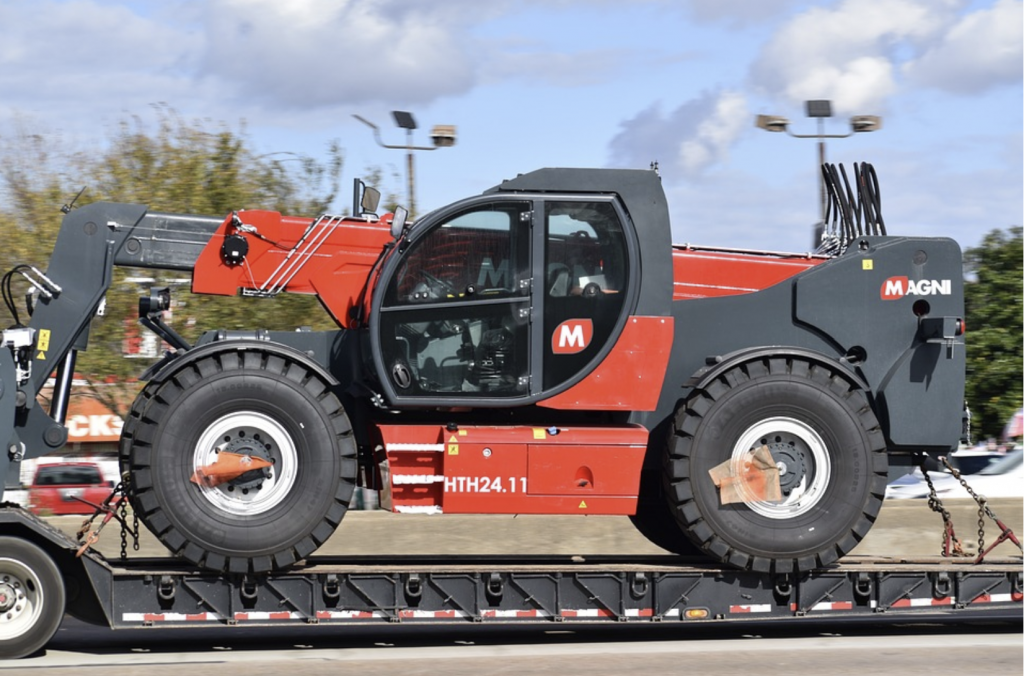
Hi, I am Cortana (Source: DualShockers)
We’re heading for another big shake up in marketing next year (what’s new?). And now that it’s December, it’s time to roll up our collective sleeves and get stuck into the changes that will be coming our way. As always, what actually happens is going to be very different to how most of us imagine it to be. Chatbots, not people, will be talking to our customers, and marketers are going to be getting more and more invested in the ad blocking arms race as savvy consumers try to hide their personally identifiable information from businesses and governments they see as a threat.
Check out these interesting and sometimes outright weird marketing trends expected to arrive in the year ahead.
ROI Metrics Will Dominate
At the moment, companies are using things like CPMs to measure the performance of their websites. The idea is that the higher the rate of conversion on their websites, whether it’s downloads, signups, or purchases, the better. But the problem with these data is that they are very mono-dimensional. Companies aren’t able to measure what the return is on their investment very easily. After all, different conversions have different values, and converting one set of customers can be a lot more costly than converting another set.
In the coming year, it is expected by Forbes and other experts that ROI-based performance metrics will come to dominate. Companies will be able to get real-time information on how much it cost them to generate an individual conversion, as well as how much that conversion cost relative to the amount of value generated by it. This new approach will then make it easier for companies to dedicate their precious marketing dollars to those instances that will generate the highest return.
Businesses Will Uncover Dark Social
Knowing where customers came from online is important. But right now, many people are choosing to keep their identities hidden, thanks to ever-increasing intrusion on their lives by governments and to a lesser degree, companies. This has led to the widespread adoption of encrypted, private messaging apps that effectively block out the ability of businesses to collect data. The problem with this is that companies rely on knowing which channels people are coming from to optimize their marketing strategies. If for instance, they’re getting lots of traffic from Facebook, but not very much from Twitter, it doesn’t make sense to plow investment dollars into Twitter.
Next year, companies will get tools that will help them uncover the world of dark social. GetSocial.io, for instance, can help firms find out where their customers are coming from, without revealing any personally identifiable information. It’s the best of both worlds, where consumer data remains private, and where companies get the information they need to better target their marketing campaigns.
Third-Party, Social Media “Buy Buttons”

The future of ecommerce looks surprisingly different from the present. At the moment, the paradigm is that online retailers have to have their own website to which their customers arrive and make purchases. There’s a lot of money being spent right now on these sites to make sure that they have high visibility on general search engines.
But thanks to the fact that people never seem to tire of social media, social media itself will soon become a shopping platform in its own right. Facebook and Pinterest and currently investigating ways to include buy buttons next to products or items. For Pinterest, this is a particularly interesting idea, since it is a site dedicated to hosting and organizing photographs, usually of beautiful, bespoke products. Companies wouldn’t have to invest their marketing efforts trying to improve their rank on Google; they’ll be investing in enhancing their visibility on platforms like Pinterest and making sure that they produce the most alluring photographs possible. New social media marketing is something you can learn more about at Simplilearn here.
Marketing That “Gives Back”
Customers want the brands that they consume to have a feel good element. They want to know that when they buy a product that at least some of their money will be going to a noble cause. There are all sorts of companies that are doing this already. Take Warby Parker, the online glasses seller, for instance. This company proudly promotes the fact that “for every pair purchased, a pair is distributed to someone in need.” Regular, everyday companies need to think of ways of resonating with their customer base and making them feel as if they are improving the world with every purchase.
Native Advertising
Internet users are getting more and more savvy to the marketing tactics of online advertisers, hence the growth in the use of adblockers. Next year companies will have to focus more exclusively on native advertising – advertising that is expertly weaved into the content of an article or a video. Advertisers are going to need to target bloggers and vloggers and get them to incorporate their own products in a way that adds value to consumers. People don’t want yet another banner ad promising to save them money: they want something that actively helps them to understand something or somewhere that gives them unbiased information about a product. Product reviews, as well as videos showcasing how much fun a product can be, will form the lion’s share of marketing going forward.
Yet More Market Segmentation
You might think that we’ve reached peak personalization for online marketing, but according to experts, it’s going to be going up another notch next year. Personalization means targeting advertising based on a person’s habits and preferences online. The basic idea is to give consumers only the advertising content that they want, rather than bombarding them with information that they are not interested in. In a world of information overload, this may be the only approach marketers can use to get their message to stick.
Marketing Will Become Mobile-First

Long gone are the days when the PC was the dominant platform through which people consume online content. The market has spoken, and it turns out that people prefer their mobile devices, despite the fact that they only provide a fraction of the screen real estate. This new reality means that businesses are going to have to optimize first for mobile, and then for desktop after, to make sure that they are prioritizing their experiences in the correct way. Right now, many website builders have a desktop-first approach, which will have to change as we go forward in 2017.
Chatbots Will Talk To Your Customers For You
If you’ve ever gotten interested in artificial intelligence or computer science, you’ll have heard about the Turing test. The Turing Test was a test devised by Alan Turing, the esteemed computer scientist depicted in the film The Imitation Game. It said that artificial intelligence was achieved if an expert couldn’t tell whether he or she was talking to a person or a computer.
It might surprise you to discover that we’re not far off the world that Alan Turing envisioned. Today’s chatbots are being developed by the world’s most advanced AI companies, including Google, Facebook, Microsoft and Amazon. They’re all in a sort of arms race to build an AI that is able to chat with customers on behalf of business, find out their preferences, and feed all those data into a central repository where it can be analyzed and made use of. Chatbots, as they are called, will soon provide users with news updates on the products that they are interested in, as well as personalized responses to their queries, slashing the costs customer service in the process.
Companies Will Deliver Their Own Breaking News
Top tech companies are already making a habit of live streaming their events. You can now watch the biggest product launches, right from the comfort of your own computer as they happen in real time. As we go into 2017, live streaming technology will continue to push boundaries. For example, Instagram has now integrated its live stream option into its new “Stores” feature, meaning companies are able to keep users apprised of the very latest developments at company HQ.
Without Influencers, Companies Will Be Nowhere
We’ve already discussed just how important it will be for companies to find bloggers and vloggers who can act as hosts for their native advertising efforts. Next year, they’ll have to reach out to these influencers more than they ever did in the past. The reason for this is that people tend to trust influencers a lot more than they do the company’s own, direct marketing. Smart companies realize that to be successful, they have to reach out to influencers to gain credibility and sell their product. They need people who are seen as leaders in their own particular social field to promote, review and use their products if they are to be successful.
So there you have it – the big marketing trends to look out for next year. We haven’t even talked about things like VR or interactive content here because they are enormous topics in their own right. Suffice to say that 2017 is going to be very different – again.
Business
How To Future-Proof Your Business With The Right Tools

Running a business is a balancing act between managing today’s tasks and planning for tomorrow’s challenges – and getting that balance right is where you’ll find success. Future-proofing your business might sound like something from a sci-fi show or just one of those words that no one really understands or does, but in this case, it’s a real thing, and it’s a really important thing. You’ve got to be proactive, and the tools and systems you choose now can either set you up for long-term success, or leave you in your competitors’ dust, so you’ve got to get it right. With that in mind, keep reading to find out more.
Think Scalability
The tools you’re using right now might seem – and actually be, in fact – perfect for your current needs, but the question isn’t whether they’re working now (you wouldn’t be using them if they weren’t), but instead it’s whether they can grow with you. In other words, you’ve got to choose tools that won’t fall apart as your business grows, meaning you’ve got to start from scratch with new systems – when you’re growing your business, you’ll have enough on your plate without that as well.
For example, small businesses often rely on simple payment methods in the early days, and although they’re definitely convenient, as time goes on you’ll probably have to rethink things, especially if you’re growing. If you’re still relying on quick fixes, it’s probably time to stop using Zelle for payments because when it comes to business transactions, it doesn’t have the features and security of something more professional.
Automate Where You Can
What’s one of the most precious resources any business owner can have? The answer is time. So if time is so precious, why are you wasting it on repetitive tasks when you could be doing other things if you put some automation in place? Just think of all the time you’d free up if you automated your invoicing, social media posts, email campaigns, and so on – what could you do to make your business better with the time you save?
Not only does automation save time, but it also means there’s a lot less chance for human error to creep in, and that’s got to give any business owner lots of peace of mind and reduce their stress levels – and doing that is always a positive.
Stay Ahead On Cybersecurity
You might have noticed a few (and possibly the numbers are growing) headlines recently about big data breaches – it basically means that customers’ sensitive data has been accessed by hackers, and when that happens, those customers can have issues with identity theft, lost money, compromised passwords, and more.
That’s why it’s so important to invest in good cybersecurity if you want to future-proof your business and make it strong and trustworthy today. Strong firewalls, secure payment systems, data encryption, cloud storage, and good cybersecurity training for your team can go a long way to protecting your business and your customers, meaning it’s going to last a lot longer and get a good reputation too.
Business
What are EDC products, and why should you always have them?

EDC gear includes products that have become indispensable for improving one’s quality of life. These are the tools and implements that can solve everything from simple daily tasks to being vital objects capable of saving lives.
Regardless of the lifestyle you lead, there are countless situations in daily life where you need a tool or item that helps resolve inconveniences or facilitates completing tasks. This is where the category of products known as EDC (Every Day Carry) comes into play. EDC includes a variety of items that are necessary in unexpected moments.
For these tools to truly be useful in daily life, they must be durable and of high quality. For this reason, it is highly recommended to choose selected EDC gear by Onibai.com, an Italian brand with extensive experience in selling this kind of exclusive everyday carry equipment. The brand offers a wide selection of well-crafted, durable products that meet the demands of everyday carry needs.
Knives: essential for multiple situations
Knives, or EDC blades, are among the most essential tools in any EDC kit. In fact, they are often seen as a symbol of someone who is prepared, practical, and functional. Whether it’s opening packages or envelopes, cutting cords or ropes, or other simple daily tasks, a suitable knife can make these activities much easier. Additionally, a good knife can serve as a means of self-defence in case of sudden attacks.
Over time, the design of knives has evolved and diversified. Daily-use knives are now specifically designed for lighter cutting tasks, such as those mentioned earlier. Tactical knives, on the other hand, are made for more intense scenarios. They are stronger and reinforced, often designed for high resistance or self-defence situations.
Urban knives, tailored for city dwellers, are built to meet the needs of individuals in modern environments, so they often feature sleek finishes that complement contemporary lifestyles. Another popular category is multi-tool knives, which are designed to handle a variety of tasks. These knives have the resilience and sturdiness of a 3-inch blade while also fulfilling the precision requirements needed for various EDC tasks.
Other essential EDC products
In addition to knives, there is a wide range of other EDC products that are indispensable in daily life. One of these is, undoubtedly, a reliable wallet. A well-designed wallet needs to be robust enough to withstand daily use while keeping essential items like bank cards, identification documents, and more, safe and in good condition.
Flashlights are also vital components of any EDC kit. These tools are incredibly useful in many situations, particularly in dark environments or emergencies where additional lighting is critical. When selecting a torch, factors such as battery life, size, portability, and brightness should all be taken into account.
Purses, fanny packs, or backpacks also play an essential role in everyday carry. These items are where people store the various EDC products described above. They usually come with several compartments and are available in different sizes and materials, depending on the person’s style and daily activities.
Other items that are part of an EDC kit include beads and cords, Velcro patches, bottle openers, multi-functional key organisers, as well as durable, long-lasting, and stylish pens that adapt to any situation and lifestyle.
An interesting category of EDC products includes stress-relief toys for adults, which provide a means of alleviating daily stress. Popular options in this category include fidget spinners, fidget sticks, stress-relief sliders, poker chips with buttons, and mechanical coins. These items not only serve as a source of relaxation but can also be a fun and effective way to manage anxiety and tension during the course of a busy day.
In conclusion, EDC gear is not just a set of tools but a lifestyle that reflects preparedness, practicality, and a proactive approach to the uncertainties of everyday life. The more equipped you are, the more empowered you will feel in facing the challenges that arise.
Business
The importance of telescopic handlers: innovation and efficiency in load handling
In the field of logistics, efficiency and safety are key aspects for the success of any project. Machines and tools must handle heavy loads and perform complex tasks with precision. In this sense, Magni TH telescopic handlers are the perfect option.

Telescopic handlers are lifting equipment that combine the capabilities of a crane and a forklift, featuring a telescopic arm that can extend and retract to reach considerable heights and access areas that may be difficult to reach manually. Thanks to this versatility, they become essential tools for a wide range of applications, indispensable in multiple sectors.
Today, the telescopic handler industry is constantly evolving, with technological innovations that enhance their functionality. One of the leading companies in this field is Magni TH, renowned for offering high-quality, efficient machinery with a focus on innovation and sustainability. This ensures that their telescopic handlers not only meet current demands but are also prepared for future challenges.
What does Magni TH offer?
Magni TH stands out in the market by offering a wide range of telescopic handlers that adapt to a long list of specific needs. Among their most notable models are fixed telescopic handlers (TH), rotating telescopic handlers (RTH), and heavy-duty telescopic handlers (HTH). They also offer aerial platforms, ranging from fixed models to articulated and rotating versions.
Furthermore, Magni TH machinery is widely recognised for its high-quality standards, due in large part to the selection of top-class raw materials. This attention to detail not only ensures compliance with market safety standards but exceeds them, guaranteeing that every machine is 100% reliable and durable.
Magni TH’s manufacturing process is another aspect that sets them apart. The company combines advanced industrial techniques with a craftsmanship approach, allowing for continuous innovation and enabling them to remain at the forefront of the market. This combined approach not only improves production efficiency but also allows for greater customisation.
In addition to their impressive product line, Magni TH is committed to providing proper advice and training to its customers. The company offers detailed descriptions of its products and services, ensuring that customers fully understand the capabilities and strengths of each machine model.
Magni TH also stands out for its focus on sustainability, reflected in the energy efficiency of each of their machines. This not only maximises user productivity but also ensures environmental responsibility at all times.
Innovation and safety
The use of innovative, high-quality telescopic handlers, like those manufactured by Magni TH, is essential for significantly improving operational efficiency across various sectors. These machines, thanks to their precision and speed in executing complex tasks, help reduce the time needed to complete projects, thereby increasing the overall productivity of companies.
On the other hand, safety is another key aspect when using high-quality telescopic handlers. These machines are equipped with advanced safety systems, such as stabilisers, enclosed cabins to protect operators, and load control systems, ensuring operations are carried out efficiently and reliably. Moreover, their ability to handle loads with precision and care is crucial for ensuring the integrity of products, significantly reducing the risk of damage during transport and handling. This is particularly important in sectors where product integrity is critical to maintaining high-quality standards.
At the same time, the use of innovative telescopic handlers can also enhance a company’s competitiveness. Investing in high-quality equipment allows them to provide services with greater efficiency and safety, helping them stand out in the market. Ultimately, investing in this type of telescopic handler can be considered a strategic decision that can have positive long-term impacts on the sustainability and growth of a company, as adopting advanced technologies demonstrates a commitment to excellence and proactivity, keeping companies at the forefront and allowing them to adapt easily to the many changes in the market.
Versatile Applications of Magni TH
Magni TH telescopic handlers are known for their versatility and ability to adapt to a wide range of applications. Unlike other companies that focus on specific sectors, Magni TH offers its products to any industry that requires load handling solutions. For example, in the agricultural sector, Magni TH telescopic handlers are key tools for tasks such as handling hay bales, transporting fertilisers, and loading livestock. Additionally, their ability to navigate uneven terrain and lift large volumes of material are essential advantages on farms and agricultural operations.
Likewise, the maritime sector benefits greatly from the versatility of Magni TH telescopic handlers. These machines are ideal for storage and cargo handling on vessels and ports, as well as for small routine maintenance operations.
In construction, Magni TH telescopic handlers are one of the most widely used tools, enabling the lifting and positioning of heavy materials such as bricks, cement, and beams. Regardless of the size of the construction project, their ability to operate on difficult terrain and reach high altitudes makes them ideal for any occasion, improving productivity and minimising the risk of accidents.
Finally, telescopic handlers are also widely useful in the industrial and mining sectors. In industry, these machines are employed for material handling in factories and warehouses, while in mining, their robustness, and load capacity make them a perfect option for working in extreme conditions.
-

 Travel11 months ago
Travel11 months agoImmerse Yourself in Nature: Explore Forest Bathing with a New Guidebook
-

 Europe11 months ago
Europe11 months agoBarcelona and Athens: cities that will leave an everlasting impression
-

 Technology11 months ago
Technology11 months agoHow Virtual Fly Elevates the World of Flight Simulators
-

 Health11 months ago
Health11 months agoExperience in clinical quality: What is it, and why is it important?
-

 Travel8 months ago
Travel8 months agoEnjoy a luxury holiday in Zanzibar
-

 Business7 months ago
Business7 months agoServiceNow Development Consultancy: Business Process Automation as Disruptive Technology
-

 Environment8 months ago
Environment8 months agoThe Future of Fashion: The Rise of Eco-Conscious Brands in the Luxury Market
-

 Business9 months ago
Business9 months agoScreen Printing Services: A Beginner’s Guide to Avoiding Mistakes and Maximizing Your Investment







